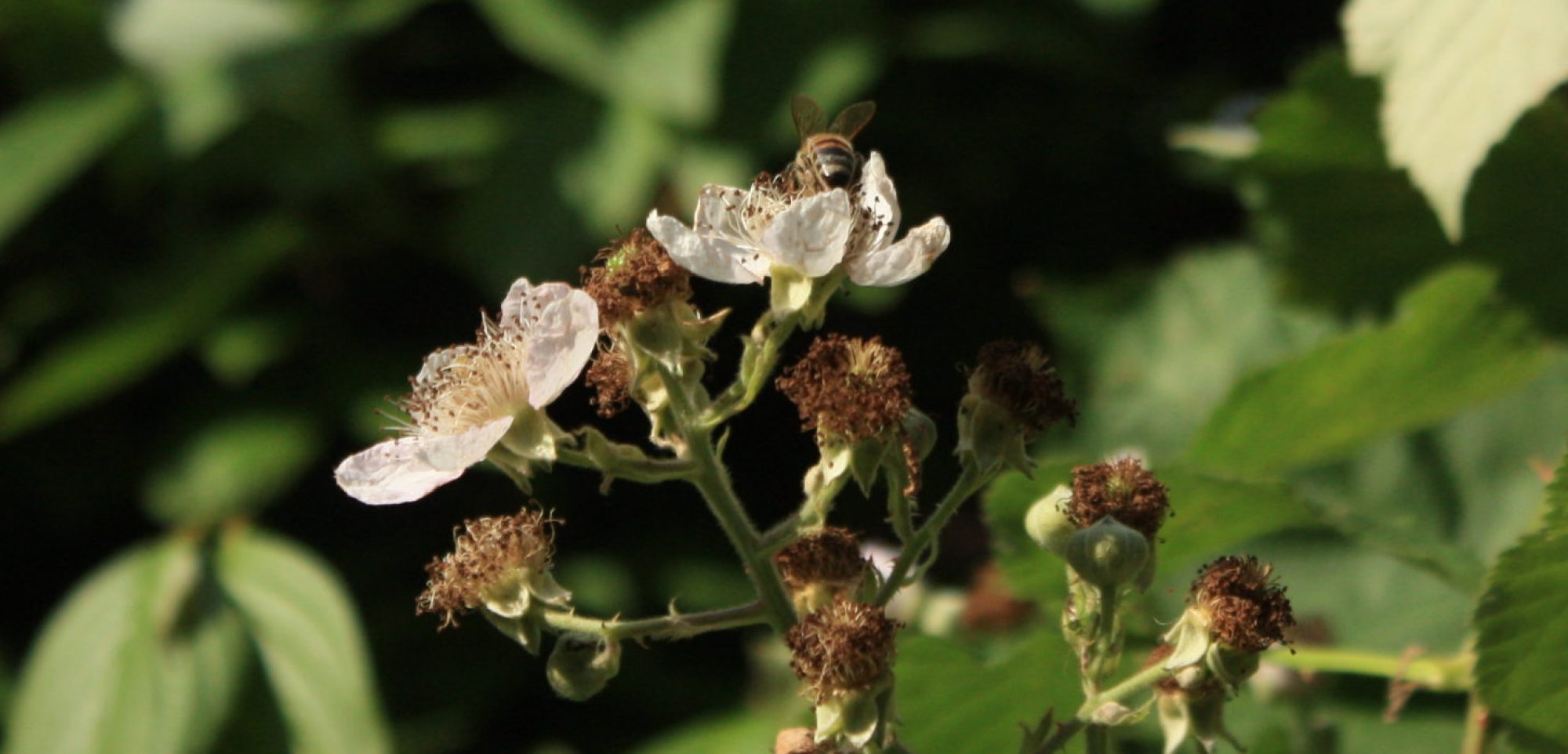Honey Texture and Consistency
- It is natural for multi-floral honeys to set to a creamy consistency in the tub or bottle. Only honeys that have been subjected to very high temperature treatments or are from certain sources known to remain liquid such as acacia, (which isn’t native to the UK) stay runny. If you need the honey to be temporarily liquid or pourable for purposes of bottling, you can coax it to this consistency: warm your tub of honey gradually by placing it within a larger pan of gently heating water (make sure you allow for any displacement of water from the pan when you put the tub in!). Stir the honey carefully to maintain even warming throughout until it reaches your required consistency. Take great care not to overheat it, as this will damage both the nutrients and flavour of the honey.
What makes this wildflower honey distinctive?
- This honey is gathered by the bees during their many flights to spring blossoming trees and hedgerows (hawthorn, sycamore, crab apple, rowan, and damson to name but a few), and summer flowerings of clover, blackberry, and meadowsweet, with some late summer purple knapweed and thistle, along with a possible infusions of heather where access to upland marshes and moors permit. Honey flavours are therefore subtle and unique to different apiary sites, responding to local ecology, soil types, weather conditions and plant cycles that change throughout the short upland spring and summer seasons.
How do you know it’s gathered from wildflowers?
- The small apiaries are sited well away from agricultural field crops; they are mainly in the uplands and valleys of rural mid Wales (in and around the Cambrian mountains), with a few secluded coastal apiaries for spring bluebells and rarer summer wild flowers. Honey flavours are interesting and very pleasing. They vary from apiary to apiary and season to season.
How do you manage your hives to support the health of your bees?
- We use only plant-based treatments to support the bees health, so the honey is as near as we can get it to organic status without actually being able to call it that.*Our bees are ones that we’ve raised ourselves over many years, for best local adaptation.
Why don’t you label your honey as organic?
- Only a few beekeepers label honey collected by bees in Britain as organic. In practice, bees forage for nectar and pollen within around a probable four-mile radius of their hive. However, a well-chosen apiary-site can reduce the probability that they can come into contact with agri-business type sprays and pesticides. Over many years, we have consistently selected and settled our apiary sites where our bees thrive well and overwinter best, ensuring they have access to varied indigenous tree and plant blossoms. In doing so, we have tried to minimise the risk of their contacting large scale crops, pesticides or other treatments that can be toxic to them. Bees along with other wildlife rely for their protection and health on people being mindful in their own use of certain garden/ household/other treatments that could harm them. Recently, there seems to have been more awareness of our need to tread lightly on the earth and look out for its other inhabitants in this respect! We’ve seen this situation improve in recent years.
Why is wildflower honey different from other British honeys?
- A lot of commercially available British honey is produced from agricultural crops such as oil seed rape and other monocrops. Due to the large scale of production of these crops, it is generally easier to produce honey in larger quantities under these conditions. However, this honey may lack subtlety in flavour compared with varied notes of multi-floral honeys from wild nectar sources, and, our experience leads us to believe that the bees themselves benefit from being able to access a variety of different natural pollen and nectar sources. We try to make sure our bees retain adequate stores of the honey they collect.
Do you always have honey available?
- The short answer is no! The longer explanation is: bees fly in reasonably mild and temperate conditions, while individual trees, shrubs and plants only yield their nectar when the temperature, humidity and point in the season are just right for them to do so. Too cold or wet and blossoms can come and go without being pollinated. If it is too hot and dry, the story can be the same. There is usually just a narrow window when the right conditions allow bees to produce honey in our part of Wales, and over the past 40 years, we’ve learned that not every spring or summer brings the weather that allows them to do what comes naturally. This is a big difference from honeys produced in countries where nectar flow seasons last longer (sometimes all year round, for example, in tropical zones). There is even some difference when you compare quantities of honey produced across Britain. For example, further south in England, where temperatures are regularly just a few degrees warmer during spring and summer and there is generally less rainfall than on the western slopes of the uplands of mid-Wales, more honey may be produced by the bees. Honey flow from heather moors can be fickle. Conditions over the last two years haven’t favoured a good nectar flow, so although we do have heather honey for sale, currently, we only have a small amount.
How is your honey handled?
- Very carefully indeed! Our spring and summer Welsh wildflower honey is simply filtered as it flows out of the honey extractor (i.e. raw).It will contain tiny quantities of pollens. Its temperature doesn’t exceed the level of heat maintained by the bees themselves in their brood nests. This ensures the nutrients and delicate flavours are intact.
